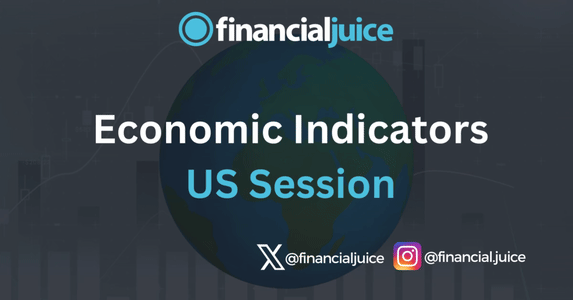
Week Ahead: Economic Indicators (US)
Hey, Traders!
For the February 12th week, here is a list of all of the major economic indicators being released during the US Session, with a brief synopsis of what they represent and what to possibly expect from the markets in reaction.
Tuesday 13th February
08:30 ET
US CPI
The US Consumer Price Index gauges the average change in prices paid by consumers for a basket of goods and services over time.
Calculated monthly by the US Bureau of Labor Statistics, the CPI reflects fluctuations in the cost of items such as food, housing, healthcare, and transportation.
Presented as a percentage change relative to a predetermined base period, the CPI serves as a measure of inflation.
What to Expect
If inflation comes in hotter than expected, you will most likely see dollar strength and US stocks weaken, as this signals that the Fed’s fight with inflation is going to require a more hawkish stance on higher for a longer amount of time.
Wednesday 14th February
10:30 ET
US Weekly EIA Crude Oil Inventories
The US Weekly Energy Information Administration Crude Oil Inventories report provides information on the total stockpile of crude oil in the United States.
It includes data on the changes in crude oil inventories, indicating whether there has been an increase or decrease in the amount of oil held in storage.
This report is crucial for assessing supply and demand dynamics in the oil market and can influence oil prices.
What to Expect
A significant buildup in inventories may indicate oversupply, putting downward pressure on prices, while a decline may suggest increased demand, potentially impacting prices in the opposite direction.
Thursday 15th February
08:30 ET
US Retail Sales
US Retail Sales is a metric that quantifies the total revenue generated by retail establishments in the United States, encompassing various sectors like automotive, electronics, clothing, and general merchandise.
Compiled and reported monthly by the US Census Bureau, this data serves as an indicator of consumer spending patterns, offering valuable insights into the health of the economy.
What to Expect
Rising retail sales are generally associated with economic expansion and increased consumer confidence, while a decline may signal an economic contraction.
As this may have implications for the future of inflation, a weak reading may result in US stocks strengthening and the dollar weakening.
US Weekly Initial & Continued Jobless Claims
The US Weekly Initial Jobless Claims and Continued Jobless Claims are economic indicators that provide insights into the labor market’s health.
Initial Jobless Claims represent the number of individuals who filed for unemployment benefits for the first time during a specific week.
It serves as an indicator of the pace of layoffs and helps economists assess the overall health of the job market.
A lower number of initial claims suggests a stronger job market.
Continued Jobless Claims reflect the number of individuals who continue to receive unemployment benefits.
It gives an indication of ongoing unemployment and the ability of workers to find new employment. A decreasing trend in continued claims may suggest improving employment conditions.
What to Expect
If jobless claims come in higher than expected, it could indicate weakness in the jobs market, which could be a potential downside inflation catalyst. In this case, stocks would likely strengthen and the dollar would weaken, as it could be an indicator that inflation will come down closer to the Fed’s target and push forward bets on rate cuts this year.
However, traders are also attentive to the risk of recession, and if unemployment is too high, this could be an early sign of a potential hard landing if continued across multiple weeks.
Friday 16th February
08:30 ET
US PPI
The US Producer Price Index measures the average change over time in the selling prices received by domestic producers for their output.
It is an economic indicator that reflects the direction of inflationary pressures at the producer level.
PPI is used to assess inflation trends in the early stages of the production process, providing insights into potential changes in consumer prices, making it a leading indicator.
What to Expect
Higher-than-expected producer prices can point to the potential for these price increases on the supply side to be passed down to the consumer side and become reflected in CPI, which would be a headwind for the Fed’s goal of returning inflation to target.
This would be likely to cause weakness in US stocks and strength in the dollar, as traders would likely push back bets on when the Fed would start cutting interest rates this year.
US Housing Starts
US Housing Starts is an economic indicator that measures the number of new residential construction projects that have begun on a monthly basis.
The data includes both single-family and multi-family housing units.
Housing starts are considered a key indicator of economic health, as increased construction activity is associated with economic growth.
Rising housing starts can signify a robust real estate market and increased consumer confidence.
Conversely, a decline in housing starts may indicate economic challenges or a slowdown in the housing sector.
What to Expect
This data is unlikely to move the markets on its own unless there is a large deviation from expectations.
However, it can still paint a picture of consumer confidence, as higher-than-expected housing starts would indicate high demand for homes, which is one of the largest investments the average American will make.
10:00 ET
University of Michigan Sentiment
The University of Michigan Consumer Sentiment Index measures the confidence of US consumers in the economy.
It is based on a survey that assesses consumers’ perceptions and expectations regarding their personal finances, business conditions, and overall economic prospects.
A higher sentiment index indicates increased confidence, which can positively impact consumer spending and economic activity, while a lower index may suggest reduced confidence and potential economic caution.
What to Expect
The last University of Michigan report was received as ‘Fed Friendly’ because it showed higher than expected consumer sentiment but also showed downward revisions to consumers’ 1- and 5-year inflation expectations.
This outlined the case for a soft landing, with consumers having confidence in the economy, as well as the view that inflation was on track to reach the Fed’s target.
A result like this again would be likely to cause strength in US stocks and weakness in the dollar, as it may cause traders to push forward their bets on Fed interest rate cuts this year.




